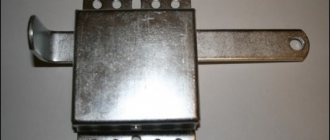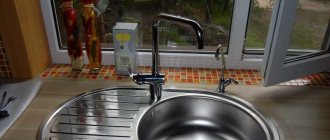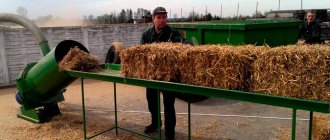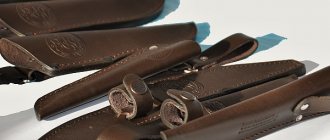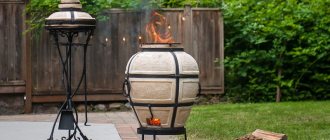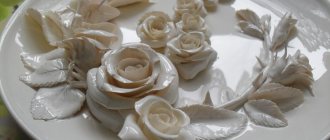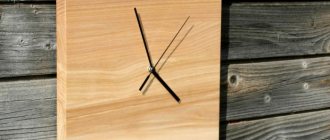How to make a clamshell with your own hands: step-by-step instructions, video
Each type of crayfish trap is made using a different method, which has its own characteristics. In addition, to create a device it is necessary in each case to prepare certain tools and materials.
Crack grip made from plastic bottles
A bottle made from plastic bottles is considered an uncomplicated and fairly simple device, the manufacture of which does not require special knowledge and skills.
To make a crayfish trap, you need to prepare:
- Plastic bottles, it is better to take 5 liters;
- Soft metal wire or thick fishing line;
- Rope;
- Cargo;
- Awl;
- Knife and scissors.
The shell is made according to the following scheme:
Cut off the part at the top with the neck of the plastic bottle. Cut the neck so that the crayfish can fit completely into the resulting hole. Insert the top with the tapered end into the bottom of the bottle; it is important to make the design in such a way that it is easy for the crayfish to get into the device, but impossible to crawl back out. Connect the parts of the bottle using flexible wire or fishing line, and first make holes with an awl. To release air from the structure, it is necessary to make a large hole in the main part. Attach a weight to the bottom of the bottle so that it does not float to the surface of the reservoir. Make a small loop from the inside at the bottom so that the bait can be attached to it. Wrap the place where the parts are joined with rope.
Note! On the pond you need to disconnect the parts rewound with rope, attach the bait, and tie them again. Holding the rope, throw the structure to the chosen place, and secure the rope itself with a peg on the shore.
Conical or round made of nylon mesh
To build a trap in the form of a cone or circle, you need to prepare:
- A mesh with small cells;
- Metal wire, its diameter should be 0.5 cm;
- Nylon threads;
- Plastic clamps.
The shell is made according to the following scheme:
- Two rings are made from wire, the first should be 50 cm in diameter, the second 20 cm.
- Attach the mesh to a ring of larger diameter using clamps or nylon thread, while fixing the mesh should be every 50 mm.
- Make 3 spacers from the mesh, their length is 15 cm.
- Place the spacers at the same distance from each other; for convenience, one spacer can be made removable.
- Stretch the mesh to a ring of smaller diameter, fix it on it every 10-15 mm.
- Using scissors or a knife, remove excess mesh from the structure.
Note! For ease of use, you can tie a rope to the smaller ring, which will make it easier to lift the structure from the bottom of the reservoir.
In the form of a metal mesh cage
To catch crayfish, it is better to use a boat without wings, but with a double entrance. To make a structure in the form of a top you will need:
- Metal mesh with small cells;
- Knitting wire;
- Wire ties;
- Rope.
The design is simple and quick to make:
- Cut a piece from the mesh; its width should be at least a meter and its length up to 2.5 m.
- Roll the piece into a cylinder, its diameter should be approximately 30 cm.
- Tie the edges of the mesh strip using binding wire; you can also use welding.
- Make 2 conical entrances from the mesh.
- Attach the narrow part of the inlets to the base of the cylinder using wire.
- Connect the narrow ends of the entrance inside the trap with wire ties.
- Tie ropes to the ends of the structure.
Let's celebrate! The bait is placed in the hole, then the structure is lowered or brought into the reservoir. There is no need to attach a load to the device, since the metal mesh holds well at the bottom.
Step by step guide
- The first step is to get rid of excess plastic material.
To do this, cut out the neck in the narrowing area of the container, capturing a small rim. - We equip the base of the bottle with small diameter holes
, allowing air masses to find a way out and increase the rate of sinking of the bottle to the surface of the bottom of the reservoir. - The neck should be inserted with the opposite side
into the container and secured with ordinary fishing line. - We equip the bottom of the bottle with small diameter holes
through which a wire should be threaded, which will serve as a latch for the bait. - Having made another hole in the bottle, we thread a rope through it
to ensure convenient lifting of the device from the reservoir.
Shell made of nylon mesh
The rachevnya, made on the basis of a nylon mesh, received the second name “inkwell” among the people. To make such a trap you should stock up on:
- fine nylon mesh;
- wire cutters;
- thick wire – 5 mm;
- strong nylon thread.
The detailed step-by-step guide provided below will allow you to make a rachevnya without unnecessary difficulties:
We use metal mesh
Traps made of metal mesh are easy to manufacture. Even a beginner can do this design. A metal rack will be quite durable and can last for quite a long period of time.
To build a trap you cannot do without:
- strong wire;
- nylon thread;
- metal scissors;
- metal mesh with a width of 1 m;
- protective gloves.
Following the step-by-step guide will allow you to build a fishing device quickly:
Creation of a metal shed
The process for creating a more complex crayfish trap is as follows:
- The roll of metal mesh must be unwound on a flat surface and a piece 80 cm long must be cut (the resulting canvas is 100 x 80 cm).
- The resulting cut must be rolled into a cylinder so that the larger side is the height of the cylinder. The ends of the mesh are fastened to each other using wire.
- Next, you need to measure the diameter of the resulting cylinder (it should be approximately 25 cm).
- From the remaining part of the metal mesh, it is necessary to cut a semicircle with a radius of 25 cm. Next, a segment 5 cm long is laid off from the base of the radius, a circle is built (with a radius of 5 cm) and cut out with metal scissors.
- The resulting workpiece must be rolled in such a way as to form a truncated cone. We fasten the edges of the mesh with wire. The resulting cone is inserted into the cylinder (with its apex facing inward) and secured with wire.
- A similar truncated cone must be attached to the other side of the cylinder.
- Next, you need to make a hole in the future crayfish trap through which it will be convenient to put bait and get crayfish. To do this, approximately in the center of the cylinder you need to mark a small rectangle (15 x 20 cm) and cut it on three sides. After the bait is placed in the trap, the resulting “door” is fixed on the cut sides with wire.
- Now you should tie a strong thread or rope to the edges of the cylinder - and the crayfish trap is ready.
Now all that's left to do is pick the right bait (crayfish love the smell of rotten meat), go to a pond with clean running water and set a trap somewhere near a rocky or clayey shore. Great catch guaranteed!
Manufacturing:
- To make a simple crayfish you will need only two 5-liter plastic bottles (although there may be more of them - at the discretion of the fisherman);
- The cap of each bottle needs to be cut off so that a large crayfish and neck can fit through.
- You must try to do this as carefully as possible, in the place of narrowing.
- Those parts that have been cut must be turned over and inserted into the bottle so that the neck is at the bottom.
- To ensure that the inserted part does not fall out, it should be fixed along its contour using wire.
- A similar procedure must be done with each of the bottles.
- When all the bottles are prepared in this way, they need to be connected to each other - also using wire.
- It is necessary to make more holes in the bottles so that they can easily and quickly sink to the bottom, where crayfish prefer to live.
- You need to tie a rope to the first bottle, and a weight to the last.
- All that remains is to put the bait in the crayfish trap and throw it to a promising fishing spot. To make catching crayfish more effective, we suggest you learn about.
The plastic bottle shell is ready for use. To make the process of making a budget shell more clear, we offer you to watch a video:
All stones
Talismans and amulets
By name
Rakolovka from a bottle
This trap is very easy to make. You will need a regular large plastic bottle (for example, 6 liters). If this is not available, you can use more common containers of 2-3 liters.
- First you need to cut off the neck at the place where the bottle begins to narrow. So that large crayfish can get into the trap, it is better to cut off the plastic rim at the neck.
- Then we make small holes in the main part, which will allow the air to escape faster and ensure that the crayfish sinks quickly to the bottom of the reservoir.
- We insert the cut neck into the bottle with the reverse side and secure it with fishing line.
- We make a couple of holes in the bottom of the bottle through which we insert a wire to secure the bait.
- At the final stage, we make another hole and insert a rope through it, which will allow you to conveniently remove the crayfish trap.
Tools for work
Pouring self-leveling floor
The work is carried out in two ways: manual and mechanical.
Let's consider equipment for manual pouring:
- Synthetic padding roller - used for applying primer. The pile should be from 12 to 14 millimeters.
- Spatula - used to apply the mixture in hard-to-reach places, for example, under radiators.
- Squeegee – will help to evenly distribute the coating material.
- Needle roller – removes air bubbles. Its moving part must be in close contact with the surface.
- Container – for mixing the mixture.
- Mixer or drill with attachment - for effective mixing of components.
- Flat shoes are a special sole for shoes covered with spikes. It will not leave any traces on the coating that has not yet dried.
- Respirator - will protect the body from caustic fumes that emit mixtures for self-leveling floors.
- Gloves – will prevent contact between skin and material. The choice should be made of cotton ones.
- Masking tape – applied around the perimeter at the bottom of the wall, protects the wall from adhesion to the self-leveling coating material.
- Film with adhesive tape – protects the freshly applied coating from dust. Must be applied to untreated walls.
The list of tools is given directly for installing the self-leveling floor. Other equipment will be needed for preparatory work and rough finishing.
Fishing with a crayfish
Open type of shells
Raklovki, or otherwise crayfish or racheshni, are quite convenient and catchy fishing gear. They are inexpensive, and if necessary, you can make them yourself. These gears may have different designs. For the simplest one you will need some mesh, wire and wood. The easiest to make is the so-called crayfish - a grip very similar in appearance to a plate. It can be made from wire or a regular wooden circle. If the crayfish is round, then its optimal dimensions are from fifty to seventy centimeters. You need to stretch the net over this circle so that it can sag in the center.
Open type shells
If you need a crayfish trap for deep fishing, then you need to tie 3 or 4 ropes to it and connect them with a knot to which a rope is tied, with the help of which the tackle will rise and fall. A float is attached to the end of foam or other material. This gear is suitable and crayfish can also be caught in it in winter.
For fishing in the shallows, another tackle is better suited; its difference from the one described above is that the float needs to be replaced with a pole, which will need to be stuck into the ground during fishing. The bait must be tied to a pole or directly to the center of the net.
A rack has a similar design, which consists of a circle (wire or wooden), a cone-shaped bag in it with a sinker fixed in the center. Typically, such tackle is baited with ordinary worms (preferably dung), they are strung on a thin wire and attached to a circle. This type of clamshell is lowered and raised using a rope.
Catching crayfish using crayfish traps is a very easy task, but you need to know that if you lift such gear slowly or it tilts, the crayfish will have time to scatter. Therefore, it rises quickly and sharply. It is better to fish with crayfish from a boat. Just immerse it in the place where the crayfish may be. Gear is checked approximately every twenty minutes. This crayfish catcher can be used almost the whole year, and even catching crayfish in the fall using this gear will be successful. The only thing is that the bait for crayfish should be different, and we will tell you which one later.
Closed shells
Closed crayfish traps are very catchy and are sometimes called night or crayfish houses. Fishing with them is much more convenient, but they are more difficult to manufacture than open ones. They are often made so that they can be folded. The main advantage of such crayfish traps is that they do not need to be constantly checked. You need to remove them and check them no more than two or three times during the night, or you can even leave them until dawn.
The simplest closed shells
There are many designs of night crayfish traps. The simplest ones are made from a wire frame (the sizes may vary, but we recommend the following: the diameter of the lower circle is forty to fifty centimeters, the upper circle is twenty-five to thirty-five centimeters, the height is 15 centimeters). You need to stretch the net over the frame so that there remains a hole with a diameter of about six centimeters. Sometimes closed racks are made higher, up to twenty-five centimeters; at the entrance, depending on the design, one or more necks are made of wood. The entrance hole must have a diameter of at least five centimeters. They are secured with guy ropes to the bottom circle. Tackle with several necks is more catchy. And if you have chosen this one, then you should know that it is better to place them obliquely. This will significantly increase catchability.
Closed view of the ranch
This species is called a nocturnal or crayfish house. Their design is more complex and foldable, but the catch is richer. When catching crayfish with such a projectile, there is no need to check it often; 2-3 checks per night are enough.
A closed shell consists of a metal frame; the lower circle should be larger than the upper one. I pull the del on the frame so that there is a small hole left.
They are made tall, with a neck at the entrance, and secured with guy ropes to the bottom circle. There may be several necks, in which case they are attached obliquely. All these tricks will help increase the catchability of a closed fishing rod.
What should be the bait for crayfish?
Before you go catching crayfish, you need to find out more about what smell the bait should have, since it is this that is the key to a big catch.
Oddly enough, in addition to rotten meat, crayfish willingly eat rye bread with garlic.
Unpeeled garlic is first crushed and pressed into the crumb, and to prevent the bait from becoming soggy longer, it is placed in a nylon stocking.
Video:
You can also grind the bread with garlic in a meat grinder, and distribute the resulting mixture in portions into gauze bags.
Crayfish have an unusually strong sense of smell, and they also love the smell of garlic too much, so you can add more of it.
Some crayfishers deny the information that bait in the form of rotten meat or fish is the most effective. On the contrary, it is good to catch crayfish using fresh food, pre-cut into pieces.
For some reason, cancer is reluctant to eat the meat of predatory fish - pike and perch. The fish is cut along the ridge in advance, and the meat is turned inside out to enhance the smell.
According to crayfish experts, crayfish found in separate bodies of water have their own diet. Therefore, their preference for different baits is determined by the trial method.
To do this, the crayfish traps, in which baits of different types are placed, are placed at intervals of 15-20 m from each other. After this, it becomes clear what food is best to catch arthropods with.
Video:
Using the same sampling method, it was found out what food attracts crayfish at different times of the year.
In spring, fish caught by hand or purchased frozen are used as bait. These can be gobies, roaches, crucian carp.
Summer bait can be animal meat. During hot periods, crayfish will readily feast on the stomach, part of the head or liver. Such bait can be purchased at the market and cut into pieces.
In the fall, when the cold weather sets in, bread with garlic is placed in the clamshell.
The procedure for pouring a self-leveling floor
Pouring self-leveling floor
The solution must be poured from the highest point on the surface . It is distributed over the plane with a roller with teeth. Bubbles that appear on the surface are removed using a needle roller.
In rooms with a large area, the mixture is applied in strips. Their width should be about 50 centimeters. You need to start work from the wall located opposite the front door.
The roller should be rolled along the wall. This will reduce contamination by bouncing drops of solution. In a situation where this is not possible, when approaching the wall, you need to reduce the intensity of rolling the roller.
The layer thickness should be from 1.5 to 5 millimeters.
Read also: Rtk 1 3у4 electric motor connection diagram
After applying the layer, you need to wait for it to dry completely. The required time is indicated on the package. On average, the formation of the mixture occurs in 8-10 hours. After this, a second layer is applied. Each of them must be applied in one day. If you do half a room one day and the other the next, it’s difficult to avoid differences and overlaps.
12 hours after pouring the floor, the entire surface is covered with varnish. The self-leveling coating will be ready for use in 10 days.
The consumption of dry self-leveling floor per 1 square meter is about 4 kilograms . This is with a layer thickness of 5 millimeters. Thus, for a room of 40 square meters you will need 160 kilograms of dry mixture.
After all work is completed, the floor can be covered with film. This will protect against dust while the layers are drying.
Pouring a floor is a labor-intensive process, since many factors must be taken into account, such as the evenness of the subfloor, the quality of materials, as well as subsequent processing and leveling. The pouring of the floor itself is intended to avoid problems with unevenness, but in any case, after pouring, the floor must be brought to its proper form. The floor must be leveled following strict technologies and rules so that after this process the surface looks absolutely even.
There are many ways to level the floor surface, but first it would be a good idea to familiarize yourself with the main causes of unevenness that you can quickly deal with.
The floor may harden with irregularities (lumps, bubbles) in two cases:
- The thin thickness of the self-leveling floor layer and the lack of tightness of the base, that is, the subfloor.
- A common case is an error in preparing the solution, too much water is poured in. It is also possible that the floor becomes covered with “waves” due to air movement in the room. To avoid such troubles, you must strictly adhere to the proportions of the mixture and water.
You should pay attention to methods that help level the self-leveling floor.
The main one is preparing the base for the self-leveling floor; careful priming and sanding are required. If the floor is wooden, then you should fill it with a cement screed, and only then with a self-leveling floor. More attention should be paid to depressions and cracks.
After pouring the floor, it should be allowed to dry for approximately 3 hours, preferably 6 hours, to allow maximum drying and hardening of the floor. It is not recommended to walk on floors that are drying.
Basically, the floor is leveled and sanded if the main coating on top of the self-leveling floor is laminate or linoleum. This material fits well on the surface.
How to make a clamshell from a bottle?
There are situations when, while relaxing near a river or other body of water, you suddenly remember that there are no special devices at hand for catching crayfish. What to do in this case? Ordinary waste material will come to the rescue. So, how to make a clamshell with your own hands from a bottle? For such a treatment you will need:
- two plastic bottles of the same diameter;
- knife or scissors;
- an awl (or any other sharp tool at hand) for piercing holes;
- wire;
- strong thread or rope.
A bottle shell is made as follows:
- Using a knife or scissors, the first bottle is cut into two parts (the cut is made just above the middle of the bottle).
- The second bottle is also cut into two parts, but the cut is made a couple of centimeters higher than the first.
- Now the smaller cut neck of the bottle, after removing the cap from it, must be inserted into the larger neck.
- Using a hot awl (or some other improvised object), you need to make five holes along the contour of the resulting workpiece.
- Next, another row of punctures is made, slightly higher than the previous holes.
- A wire is pulled through the resulting holes so that both necks of the bottles are securely fastened to each other.
- It is also necessary to make two pairs of punctures on different sides of the resulting workpiece in order to attach weights to the bottle.
- Now it is enough to tie a strong thread to the outer neck of the bottle to throw the rachevna into the reservoir - and it’s done!
Such a simple crayfish trap, the photo of which is presented below, can easily accommodate a couple of small crustaceans.
Conclusion
A squeegee is a tool that you will actively use when leveling the mixture over the surface, so not only the speed of work, but also the final result depends on its strength and quality. Using reliable available tools and adhering to the technology described above, you will end up with a high-quality floor covering.
For more information on this topic, watch the video in this article.
If you need to buy a SVP tile leveling system in Moscow, call or write to us, we will be glad to cooperate! All you need to do is simply write in the feedback form, or call the phone numbers listed on the website. If you decide to buy a tile leveling system in Moscow, call or write to us, our polite managers will definitely contact you and answer all your questions. We will be glad to mutually beneficial cooperation! See you in touch!
Screen
Screens are called lift-type traps with a mesh stretched over a metal frame. They are also easy to make at home. For this we need:
- strong elastic steel wire with a diameter of 4-6 millimeters;
- mesh with small cells;
- cord.
To make a shell out of this, you need to do the following:
- We bend the wire into a circle with a diameter of about fifty centimeters. For this we need a piece 1.5-1.6 meters long.
- We weld the ends of the wire or tie them with binding wire.
- We stretch the net over the resulting hoop. The tension should not be tight so that the net sags a little in the center.
- We tie four laces of equal length to the hoop, the segments should be approximately 40-50 centimeters.
- We tie the second ends of the laces together.
- We attach a rope to a common knot.
At the pond we tie the rope to a long, strong pole. We place a weight in the middle of the screen and tie a bait placed in a bag made of rare fabric. It could be:
- tulle;
- gauze;
- Women's tights, maybe not new.
We lower the crayfish trap into the water and wait for the crayfish. This trap needs to be checked every 20-30 minutes. We pull out the crayfish vertically, while the weight helps to pull the bottom, preventing the prey from quickly leaving the crayfish.
Preparation of the solution
Pouring self-leveling floor
Self-leveling flooring is made from dry mixtures. It has the ability to harden when exposed to water and air.
You need to mix in a container, you can use an old bucket. First, water is poured, then the dry component is gradually introduced. The mixture must be thoroughly mixed until smooth. It is better to do this using a drill with a special attachment. For 25 kilograms of dry self-leveling floor you need approximately 50 - 60 liters of water.
After the ingredients are mixed, you need to check for consistency:
- Take a lid, for example, from a bottle of shampoo. The diameter should be about 5 centimeters, height 4.5 centimeters. Remove her bottom
- Place it on a flat, smooth surface
- The mixture is poured into the lid
- It will start to spread. The consistency is normal if the diameter is from 16 to 18 centimeters. If the diameter is smaller, then water should be added, if larger, the dry component should be added.
Shell made from construction mesh
Another option for making a shell is from construction mesh. The layout of this shell is identical to the previous one. Only it will have a larger volume. We will need a metal mesh with a 1 cm mesh. You can use it with a smaller mesh, but its price will be more expensive.
From tools and materials we will need:
- Metal scissors
- Roulette
- Marker
- Pliers
- Nylon rope
- Metal wire
The width of the mesh is 1 meter, length 80 cm. We cut a piece of mesh to the required length and twist it into a cylinder:
Before this operation, it is necessary to file the edges in the places where they were cut with metal scissors. Otherwise you may cut yourself.
The next stage is to close the ends of the cylinder and connect them first with the tips of the wire that were formed after cutting off part of the mesh with scissors. We connect the cylinder at both ends:
It should look something like this:
The next step is to take the wire and cut off pieces 4-5 cm long. Next, we thread it through the junction of the ends and twist the wire with pliers to get a reliable connection:
We make such twists along the entire length of our future shell in increments of 8-10 cm.
Having completed this operation, measure the diameter of the circle at one of the ends. Naturally, the sizes of the circles must match. In our case it turned out to be 25 cm.
Next we perform the following operations. We take the remaining mesh and lay it on the ground. Next, measure 25 cm from one end.
After this, draw a semicircle using a tape measure. Next, take metal scissors and carefully cut out a semicircle.
Mark the middle with a marker:
We measure 5 cm from the middle and draw another small semicircle. This will create a cell through which the crayfish will crawl into the trap.
Then we cut this small semicircle along the kennel and get this blank:
After that, we make this cut cone out of it:
We insert the resulting workpiece into one end of the cylinder.
We make sure that we have correctly calculated the dimensions of the shell. We make the same cone for the second end of the shell. After this, carefully thread the wire around the entire circumference and, as it were, stitch two figures. As a result, we should have the following design:
To cast over a long distance, we tie a nylon rope to the crayfish catcher. If it is not there, then you can tie the wire that is used in the wiring. We place rotten meat or fish inside it. For stability, do not forget to place a weight in the middle. Stones of suitable diameter will do. To easily remove the loads, it is better to make a small window on the side of the trap, cutting it with metal scissors. You can fasten it at two points with wire.
Good fishing online stores
will allow you to purchase any fishing goods at competitive prices!
Subscribe to us - through them we publish a lot of interesting information, photos and videos.
Popular sections of the site:
The fisherman's calendar will allow you to understand how all the fish bite depending on the time of year and month.
The fishing gear page will tell you about many popular gear and devices for fishing.
Fishing baits - we describe in detail live, plant, artificial and unusual ones.
In the bait article you will get acquainted with the main types, as well as tactics for using them.
Learn all the fishing lures to become a real fisherman and learn how to choose the right one.
Materials for production
Traditionally, the following materials were used to make crayfish shells.
- Nylon mesh is an affordable and fairly waterproof material that allows you to quickly build a trap. It is enough to make a frame of a suitable shape and stretch the net, and you can hope to catch an arthropod trophy. Nylon is good because it is easy to cut and tie. Over time, the crayfish's claws render the trap unusable.
- Steel mesh today has many modifications, so you can choose the most suitable material for your product. The famous chain-link mesh can be used when you need to stretch the fabric over a frame. And the welded version with rectangular cells holds its shape well without an additional frame.
- Craftsmen extract metal hoops from old wooden barrels, rusty tanks, aluminum cans, etc.
- Steel reinforcement, thick wire, and thin-walled tubes can also serve as a frame.
- Crayfish shells made from plastic bottles are inexpensive. These can be drinking containers with a volume of 5-6 liters.
The most commonly used materials are:
- metal wire;
- nylon rope;
- fishing line
Tools you should stock up on include a tape measure, metal scissors, pliers, an awl and a knife.
Making a clamshell with your own hands
Catching crayfish is not difficult. It is enough to have even one crayfish trap, which is easy to make with your own hands. The lightest and most frequently used crayfish catcher is a ring with a diameter of about 45 centimeters made of wire, which is covered with mesh. The disadvantage of this system is the need to check every half hour, since the crayfish, having eaten the bait, can simply run away.
We suggest you make a more convenient crayfish trap, once in which the crayfish will no longer be able to get out of it.
Manufacturing:
First we need to make a couple of metal rings. The diameter of the lower one is about 45 centimeters, the diameter of the upper one is about 17 centimeters.
We attach the mesh to the ring using plastic clamps approximately every 6 centimeters. If you cannot find plastic clamps, then nylon thread may also be suitable for fastening.
We make three spacers from thinner wire; electrodes with a diameter of 3 millimeters are well suited for these purposes. The spacers must be made the same length and so that the ring with a smaller diameter is in the center at approximately a height of 15 centimeters.
If you want to make a folding shell, then make one of the 3 spacers removable. The remaining 2 are attached to rings.
Once the spacers are in place, tighten the sides of the frame. Next, you need to grab them using clamps to the upper ring.
We fix the clamps on the upper ring every 12 millimeters. We cut off the extra pieces and our soup is ready! Now you can go to a pond and try it out by installing it in a place where crayfish can be found. Do not forget that the bait must be tied.
Preparing the floor for pouring the coating
You can pour it on a concrete or cement screed, on an old wood or tile floor . Preparatory work in these cases will vary. Properly carried out preparatory work will become the basis for a quality floor. They will ensure a long service life.
Preparing the screed
An important step is the rough work of installing the screed. This is the basis of the future floor.
- If the screed is old, you need to check it for weak spots and oil stains. If problem areas are found, they need to be dismantled. Restoration is carried out with cement mortar or a special mixture for screeds.
- This is done so that the material does not stick to the wall. Moreover, it will soften possible deformation that can be transmitted from the rough screed. Prevents the appearance of cracks and helps maintain the integrity of the floor covering.
- Ensure stable temperature conditions. When dry, self-leveling floors do not tolerate drafts and sudden temperature changes.
- It is important to maintain the moisture content of the rough coating. It should not exceed 4%. If it is not possible to lower it, then the screed is treated with a special waterproofing agent in several layers.
- Next, a layer of primer is applied. It will fill all existing pores, this will prevent the formation of air cushions on the main coating.
Read also: Do-it-yourself homemade winding machines
Preparing wood surfaces
The self-leveling floor is poured onto a flat, dry base. This condition is specified in the normative act SP 29.13330.2011.
The wooden surface should be inspected for various defects:
- Remains of old paint
- Oily stains
- Traces of rotting
- Moldy spots
- Wobbly boards
- Skolov
- Varnish coatings
- Blackness
There should also be no gaps between the floorboards . They should not make a creaking sound when walking.
The paint is removed using washes or hand graters. After treatment, the surface will be rough, this will ensure good adhesion to the waterproofing.
All chips and cracks must be repaired . For this you can use putty or a mixture of sawdust and PVA glue. Masters of self-leveling floors recommend paying as much attention as possible to this process. If done poorly, the needle roller will tear out parts of the material, which will create bumps on the floor covering.
If necessary, additional fastening of the floorboards is necessary . It is done using self-tapping screws. The minimum distance between them should be 50 centimeters.
If the boards are heavily damaged, then it makes sense to cover them with chipboard or plywood . Their thickness should be from 14 millimeters and above. To eliminate possible creaking, chalk chips are poured between the sheets.
Old skirting boards need to be removed. The protruding nails are pressed into the wood with a hammer.
The next stage of preparation will be cleaning up construction dust. To do this, you need to vacuum and wipe the coating with a damp cloth. The mixture must be poured onto a perfectly clean surface.
Next, the film is laid and fixed over the entire surface . It acts as waterproofing. If the flooring is formed from pieces, then they should overlap by 10 centimeters.
Waterproofing prevents wood from rotting under the finish coat. Moreover, it will not be able to draw moisture out of the self-leveling layer. Because without enough liquid, the floor will lose some of its strength.
Along the perimeter of the room, masking tape is applied along the bottom of the wall. It prevents adhesion of the self-leveling flooring to the wall and prevents cracking of the coating.
Preparing the tile surface
Base made from old ceramic tiles
The basis for a self-leveling floor can be old ceramic tiles. It must undergo preparation before starting work.
- Check the reliability of each tile. All loose units must be removed. There is no need to glue them, the self-leveling mixture will fill the recess
- The floor needs to be washed well. It should be free of dust and dirt. All grease and oil stains are removed
- Clean floors need to be treated with a degreaser
- The seams need to be treated with sealant to strengthen
- Next a layer of primer is applied
- After complete drying, you can begin pouring the floor. It is better to start working within 24 hours, or follow the recommendations for drying time on the mixture packaging
How to catch crayfish correctly?
In order to get a good catch of crayfish, you need to use the recommendations for catching them, since not in every place of the reservoir it is possible to catch prey in large quantities.
Search for a place
To choose the right place, it is better to use the following recommendations:
- Crayfish love clean water, maximally enriched with oxygen, so the best place is rivers.
- They live on the clay bottom, here they dig holes of more than a meter.
- Crayfish do not tolerate shallow water and sandy or muddy bottoms.
- They should also be caught on a rocky bottom; crayfish find secluded places under rocks.
Catching crayfish can occur at different depths; in some reservoirs it is enough to go knee-deep, while in others you will have to use traps at a depth of up to 3 m.
Fishing time
It is better to catch crayfish at night. It is from 10 pm to 3 am that the inhabitants of reservoirs are most active and go fishing. However, in some reservoirs crayfish become active in the early morning.
Note! For crayfish lovers, do not forget that in certain months there is a ban on catching crayfish. It operates during the time when females bear larvae and eggs. In different regions this period lasts in certain months.
Feed
Crayfish are caught using different baits:
- Fresh fish (some crayfish fish lovers put a little dill in a mesh bag, a piece of cake and bread, the crust of which has been rubbed with garlic);
- Meat;
- Frogs;
- Grasshoppers.
In general, crayfish can be caught with any bait that has a rancid smell, since these inhabitants of the reservoir are considered scavengers.
Catching crayfish is quite an interesting activity; proper preparation for the process is especially important. To get a big catch, you need to think through the trap, make it correctly, and also choose a place for the catch.
Do not forget: that crayfish are active at night, and also, the rancid the smell of the bait, the higher the chances of catching a large number of them.
Video “Crayfish climb into the crayfish trap”
This video shows how crayfish, sensing bait, climb into an open crayfish trap.
Approximately the same principle applies to crayfish traps of a slightly different type, which are called butchi or gobies, which are crayfish traps with two necks. Their shape can be arbitrary; both square and cylindrical are allowed. The maximum length is 70 centimeters, diameter up to twenty centimeters. They are made from pine splinters. Secure to six circles with wire. There are 2 necks at the ends. The diameter of the inlet is from five to seven centimeters. A door is made at the top, which is necessary for pulling out caught crayfish and laying bait with a stick.
Butches and bulls
The main disadvantage of closed-type crayfish traps, in addition to the complexity of their manufacture, is their rather large size. Fishing with such gear is carried out on one specific body of water. Crayfish fishers who fish in various bodies of water prefer folding or dismountable crayfish.
A folding night light is made from a pair of wire circles (the diameter of the lower one is about 33 centimeters, the diameter of the upper one is about seventeen centimeters), the inlet hole is located in the neck, the diameter is about 6 centimeters. In this design, an additional float is attached, which keeps the tackle deployed. You need to put a sinker, a metal object or some kind of stone inside. This crayfish trap, like all others, is raised with the help of a rope, at the end of which a float is tied.
Collapsible vent
This gear is designed approximately like a butch. It is made up of 3 wire circles (diameter from 20 to 25 centimeters). A net is pulled over the mugs, and two necks (length 27 centimeters, entrance about six centimeters), attached to each other with ropes. A pair of wire spacers, split at the ends, rest against the outer circles and keep them taut. Along with similar ones, gear with several necks is also used; crayfish go into this type of crayfish trap more readily.
Rachevnya with several necks
About the Ink Trap
This crayfish catcher is a more improved previous model. Structurally, the trap is very similar to a non-spill inkwell. The rechevnya is equipped with an additional ring. Its diameter is 300 mm.
Using four welding electrodes, the new ring is connected to the bottom. The result is a wire truncated cone, onto which a fine mesh is stretched. Four laces are tied to a small ring. This model, like the screen trap, is equipped with bait at the fishing site. Thanks to the presence of high sides, the river in the form of an inkwell does not need to be removed from the water every half hour.
What do the experts advise?
Judging by the reviews, often baits made from a mesh structure are washed out with water. To prevent this, experienced fishermen recommend placing meat in bags made of gauze. You can also use old women's tights.
It often happens that, having pulled out the trap, the catchers discover that it is empty. To avoid dragging the structure in vain, experts advise catching it using a large piece of glass. By placing it on the surface of the water, you can watch what is happening at the bottom. However, water can get on ordinary glass and distort visibility. Therefore, it is best to look underwater using an empty aquarium with high sides.
As soon as a sufficient number of crabs crawl to the bait, the trap can be taken out. If the fishing process is carried out using a simple structure in the form of a frame with a net, there is a possibility that the catch will escape. Therefore, experienced catchers advise getting the device out quickly.
